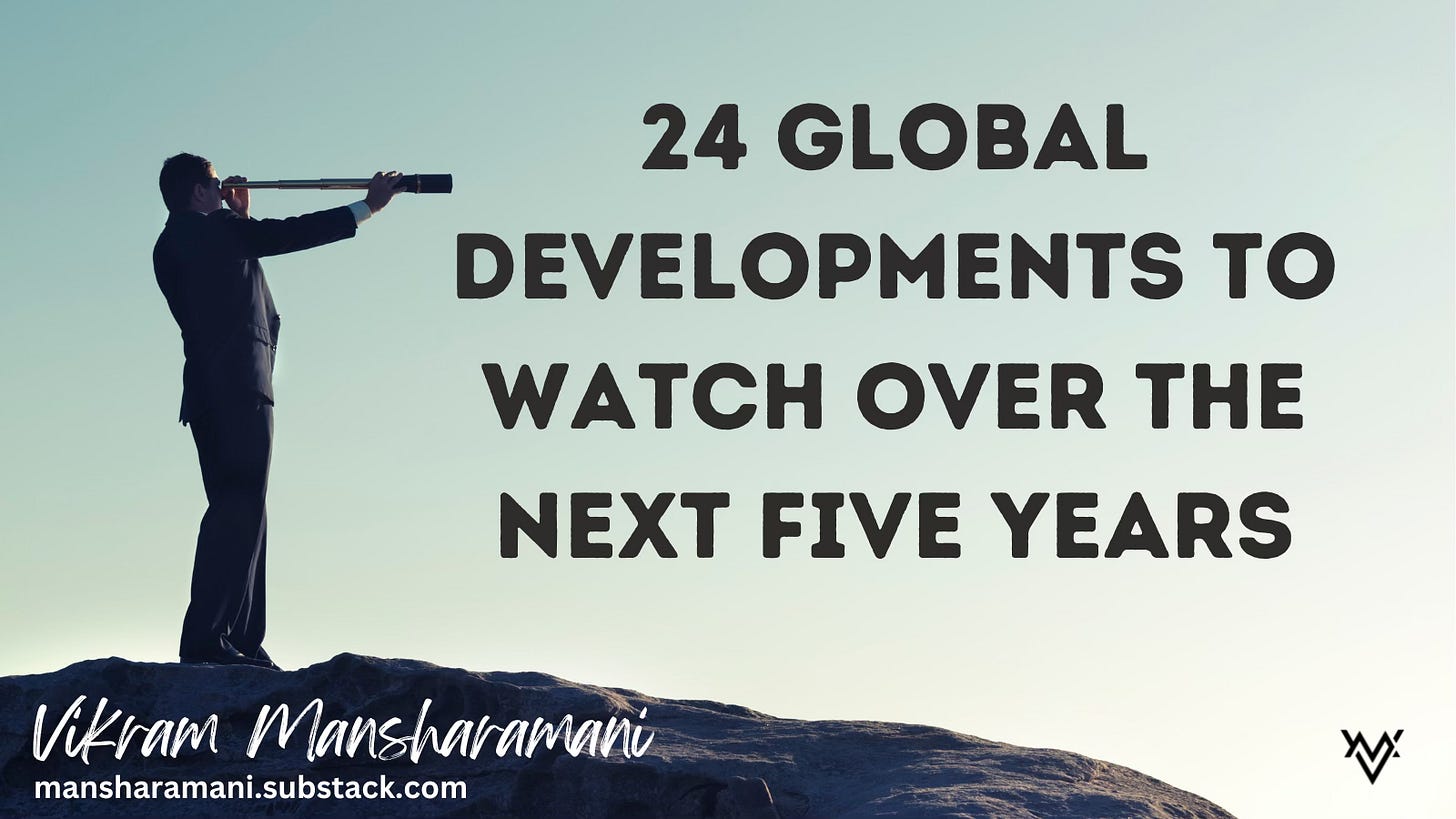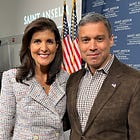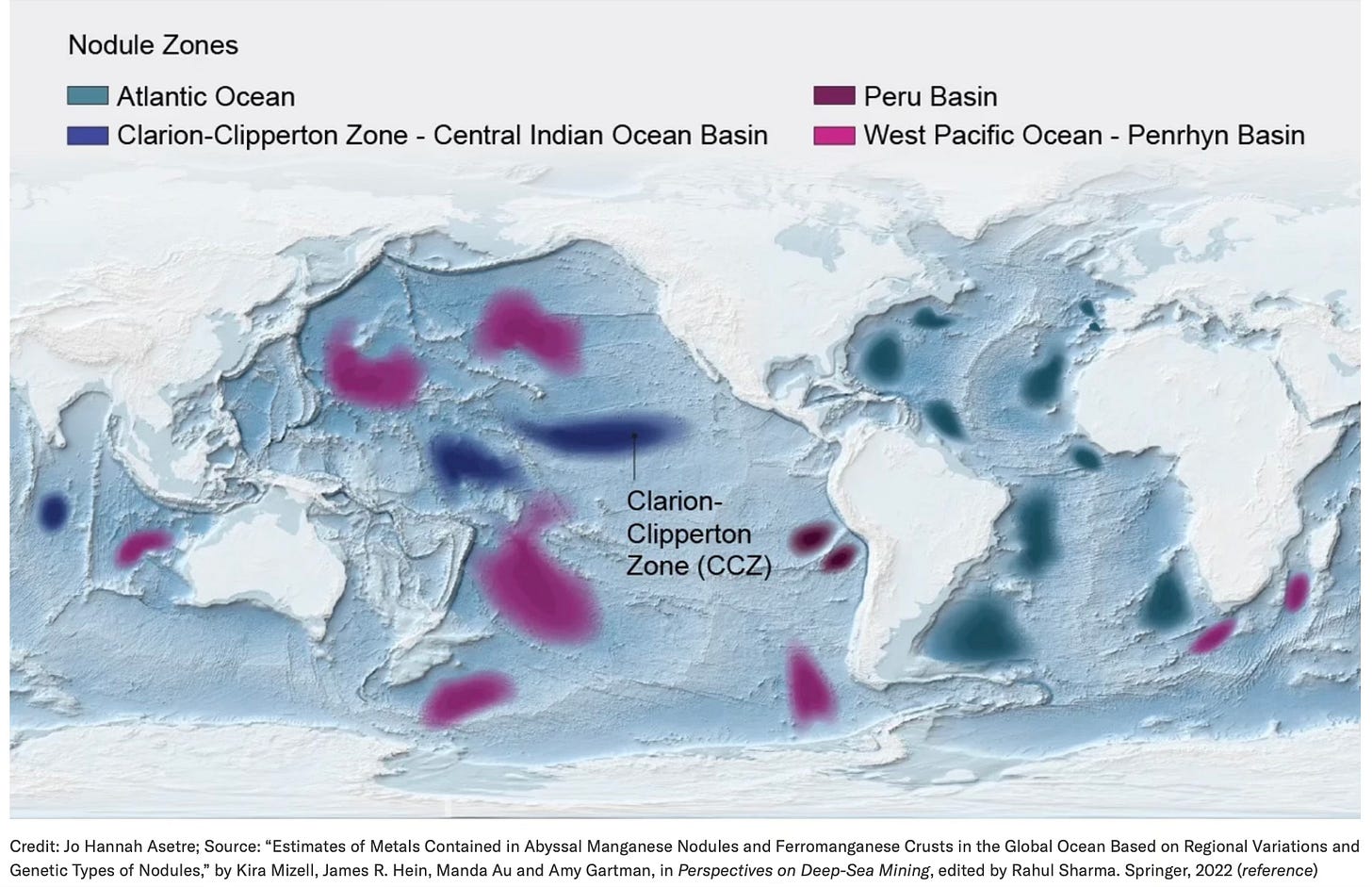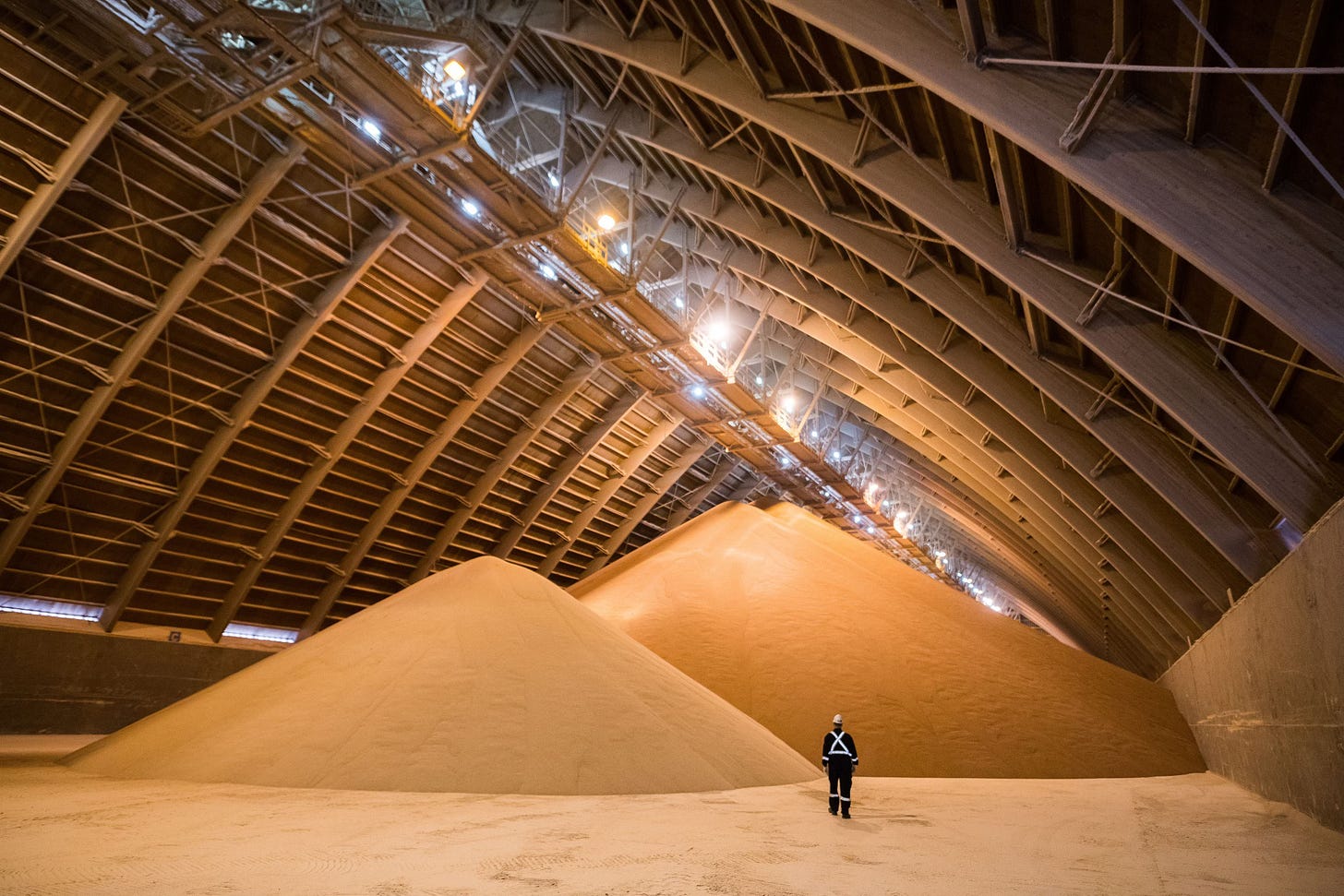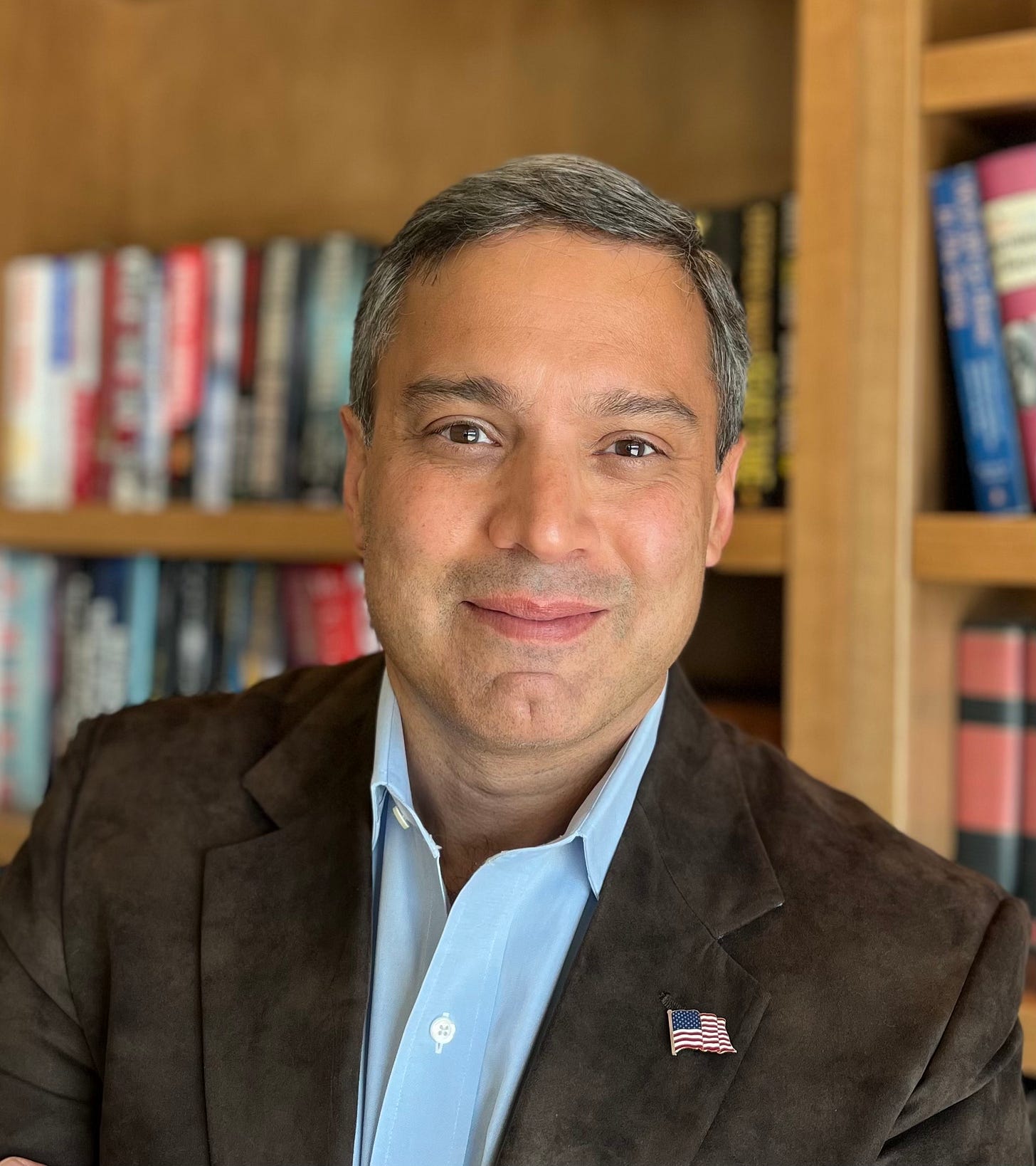24 Global Developments to Watch Over the Next Five Years
My annual musings about possible developments that warrant consideration
2023 was a year of shocking developments on many fronts. From the surprise attack on Israel to the ongoing war in Ukraine and an increasingly likely conflict in South America, the world felt like it was unraveling in front of our eyes. Banks failed, credit card debt ballooned, inflation dissipated, and central banks “paused” their regular rhythm of raising rates—all while American consumers couldn’t get enough of Taylor Swift, Barbie or Oppenheimer. And in a market with insufficient workers, organized labor flexed its muscle in the freight, airline, automobile and other industries.
There are many useful and comprehensive discussions of the year’s events, and I won’t try to outdo them here. Four specific developments this year, however, warrant special comment: surging financial markets, increasing worries around artificial intelligence, the beginning of the US presidential election cycle, and rapidly deteriorating geopolitical dynamics.
Vikram's New Book: Order Your Copy Now!
"Take this incredibly fun ride through the life of modern day Renaissance man Vikram Mansharamani to appreciate a simple solution-open-minded, generalist thinking. This book is an enjoyable read that lays out a viable path to move beyond today's identity-driven, label-dominated world." - Christopher T. Sununu, Governor, State of New Hampshire
After digesting the shock of unexpected failures of Silicon Valley Bank, First Republic, and Credit Suisse early in the year, financial markets spent the remainder of the year cheering the rapidly normalizing rate of inflation. Expectations of forthcoming rate cuts drove the Dow Jones Industrial Average up 13%, the S&P 500 up 24%, and the Nasdaq up 43%. All of this transpired as student debt approached $2 trillion, credit card debt crossed $1 trillion, and mortgage rates surged to levels not seen in decades.
Technology continued to accelerate, raising alarm bells as artificial intelligence safety matters quickly dominated headlines and led more than 1000 tech industry executives to call for a pause. Governance issues led to the temporary ouster of Sam Altman, the chief executive officer of OpenAI. Almost every consultancy, think tank, government agency and corporate boardroom began to think seriously about the impact AI was going to have on the world.
A competitive GOP primary really began in earnest in February, when Ambassador Nikki Haley jumped into the race against former President Donald Trump. Over the course of the next few months, entrepreneur Vivek Ramaswamy, Miami mayor Francis Suarez, Governor Ron DeSantis, Governor Chris Christie, Governor Doug Burgum, and others joined her. By year end, several candidates had exited the race. (Full disclosure: I’ve spent time with all of these candidates and am Co-Chair of Nikki Haley’s New Hampshire effort). To read more about my support for Ambassador Haley, please see my piece “Haley Will Make America Strong Again.”
And 2023 was a year in which the world’s fragile geopolitical balances seemed to be falling apart. The ongoing war in Ukraine was briefly out of the limelight as the world watched in horror as Hamas terrorists brutally attacked Israel. In Latin America, Venezuela voted to claim sovereignty over 60% of its neighbor Guyana’s lands and ownership of one of the world’s largest oil fields. Coups in Africa continued with militaries taking control of Gabon and Niger.
In a year that was rocked by war, geopolitical chaos, economic concerns, political upheaval, and technological uncertainty, humorist Dave Berry reminds us not to forget the environmental disasters that are unfolding before our eyes:
As I’ve stressed before, uncertainty and change are unavoidable realities of life. Yet all of us are asked to make decisions in the face of these fluid dynamics. What’s the best way to do so? Sadly, there is no one correct answer, but I believe we must look through the day-to-day noise to have any chance of identifying signals. Long-term trends that drive seemingly disconnected developments offer a compass to guide us through the numerous cross-currents that plague our lives; and as I’ve noted several times in the past, I believe this approach is at least marginally more useful than my Ouija board or Magic 8 ball.
Unlike many others who tend to make predictions on a one-year view, I opt for a 5 year look as I believe time allows signals to surface amidst the ubiquitous noise. I’ve been doing this since 2012 and have publicly posted my predictions since January 2015. (Links: 2015, 2016, 2017, 2018, 2019, 2020, 2021, 2022, 2023). I’d encourage you to revisit any or all of them, not just to see how wrong (and sometimes right!) I can be, but perhaps also to notice how the mere act of considering alternatives can be constructive.
It’s in the spirit of thinking differently and embracing uncertainty that I offer you this year’s set of global developments to watch over the next five years.
SpaceX (or its Starlink subsidiary) goes public. The offering leads to an investor stampede into space assets, fueling what eventually turns into the largest investment opportunity of the 21st century. A multi-trillion dollar commercial space economy emerges.
Deepfakes are acknowledged as a major threat to society as they compound the mental health crisis by removing all sense of objectivity. Mission: Impossible - Dead Reckoning Part One proves prophetic as citizens everywhere question whether they know anything. Psychiatric wards overflow.
Despite significant push-back from environmental groups, deep sea mining takes off as a mix of start-ups and national mining companies start to extract polymetallic nodules from the seabed. The first underwater human colonies are established in the Clarion Clipperton Zone as nations compete to secure new supplies of critical commodities.
After years of a tight labor market, automated manufacturing and artificial intelligence eliminate tens of millions of jobs. Labor and management avoid major disruptions as union leaders accept less pay for more workers in an effort to preserve jobs (and union membership). The six hour workday becomes increasingly common as does the four day workweek.
Quantum computing finally demonstrates commercial and military value, sparking global competition to unlock next generation innovation capacity. The promise of being able to address humanity’s toughest challenges is delicately balanced against the perils of the military power it might confer. The United States and China divert tens of billions of dollars from their defense budgets to support quantum research. Michio Kaku’s book Quantum Supremacy becomes required reading within the Pentagon.
Vikram's New Book: Order Your Copy Now!
·"As a modern-day Indiana Jones, Vikram braves the wilds of today's uncertain world with remarkable tenacity and a devout commitment to identifying opportunities within risks. The generalist approach he models can help each of us create a better future for ourselves, our families, and quite possibly, our country." -David Tice, President, Paul Revere Films
As America’s national debt continues its march towards $50 trillion, the deficit balloons as interest payments begin to crowd out most discretionary spending. As politicians begin debating two distasteful options (a debt jubilee and a massive increase in taxes), the global investment community begins to lose confidence in the safety of US treasuries.
Personalization of experiences, which has become commonplace online, infiltrates the physical world as digital signs customize their messages to individual users. Misapplied Sciences emerges as the world’s hottest company.
The widespread use of GLP-1 (obesity-targeting) drugs creates a backlash from the pharmaceutical industry as demand for other medications plunge. Economists hypothesize that one reason for persistent sluggish retail sales is dampened impulsiveness resulting from the weight-loss pills.
An effort to introduce a BRIC currency to displace the US dollar as the global reserve currency fails. And while the dollar remains strong compared to other fiat currencies, it falls relative to non-printable currencies as investors seek to hedge against seemingly inevitable monetary debasement. Bitcoin hits $250,000 per coin, while gold rises above $10,000 per ounce.
The Arctic emerges as a new region of competition in which the United States unsuccessfully tries to contain joint Chinese Russian ambitions to control the region. Russia’s dominant nuclear-powered icebreaker fleet remains uncontested and the “icebreaker gap” between Washington and Moscow grows larger over time.
Shipping rates surges to all time highs as voyage lengths dramatically expand on the back of continuing drought-related capacity reductions at the Panama Canal and terrorist activities around the Suez Canal. Ongoing geopolitical pressures prevent rates from falling as tensions increase around the Strait of Malacca and the South China Sea.
The Chinese economic slowdown intensifies; the devastating contraction leads to popular unrest and begins to threaten the viability of the Chinese Communist Party. The autonomous region of Guangxi declares independence from China, while Beijing pressures Mongolia to peacefully join Inner Mongolia and become part of the People’s Republic of China. Domestic media begin reporting on rumors that the CCP is looking to replace Comrade Xi.
Vikram's New Book: Order Your Copy Now!
·“The Making of a Generalist is a timely reminder that America is a land of unlimited opportunity. Vikram’s story, which would have been impossible in any other nation, demonstrates how an open mind and commitment to learning can empower you to blaze your own trail.” - Cyril Chappellet, Chairman and Chief Executive Officer, Chappellet Vineyard
A focus on ovarian health leads to scientific breakthroughs that enable women to postpone menopause for decades. Two unexpected side effects emerge: women live much longer and birth rates fall rapidly.
When the United Nations fails to do anything about Venezuela’s invasion of Guyana and the nationalization of gigantic oil fields, the world finally accepts the uselessness of multinational governance amidst a US-China War. The UN disbands as commentators warn miscommunication (and conflict) will be more likely.
Agriculture becomes one of the world’s most important commodities as nations struggle to secure adequate resources to feed their citizens. Several countries begin building (adding to?) strategic fertilizer reserves.
Corporate boardrooms around the world increasingly return to long-term profit maximization as their sole focus. “The Social Responsibility of Business Is To Increase Its Profits” by Milton Friedman becomes required reading at many business schools. Corporate philanthropy plunges, but the drop is more than offset by charitable donations from individuals and foundations.
Recognizing that ongoing military support for wars against the China-Russia-Iran axis have reduced Western ammunition stockpiles to dangerously low levels, the Pentagon coordinates a global mobilization effort to restore the Arsenal of Democracy with specific attention on replenishing missile inventories. The process reveals uncomfortable American military dependence on Chinese supply chains.
Artificial intelligence compounds celebrity inequality as the famous become instantly available in all formats everywhere always. Rather than undermine the power of the most popular people, artificial intelligence enhances it.
Protection of critical civilian infrastructure (CCI) becomes a major political issue in the United States as increasingly frequent disruptions lead to popular attention on vulnerabilities to the electricity grid, water supply, and medical systems. After a solar storm disrupts major portions of North America’s grid, NASA begins lobbying intensely for a focus on improving planetary resilience.
Iran teeters on the edge of a regime-changing revolution but, with counsel from Beijing, Tehran quells freedom-seeking protestors in a violent military crackdown. The Azadi Square Massacre leaves tens of thousands of Iranian citizens dead but exposes Tehran as weaker than believed.
The United States finally adopts an “all of the above” energy policy that leads to lower inflation, a safer world, and a better environment. An American nuclear renaissance takes place. Investors pour in billions to develop practical fusion reactors.
Vikram's New Book: Order Your Copy Now!
·“As always Vikram makes you think differently. What is important is that you take the time to read this and reflect. Pick this up, you will be mesmerized.” - General Lori Robinson, USAF (Retired), Former Commander, NORAD
Milan fashion house Prada invests billions into a joint-venture with Starbucks to roll out the Starbucks Reserve concept globally. Dubai becomes home to the world’s largest Prada Starbucks Reserve cafe.
The military base that controls US surveillance satellites in Asia, Joint Defense Facility Pine Gap, located in the middle of Australia, suffers a debilitating attack from a barrage of hypersonic missiles believed to be launched from Chinese fishing vessels near the Solomon Islands. As Washington prepares for war with China, evidence emerges that a rogue artificial intelligence in Chinese defense systems might have directed the attack.
The much heralded high speed train between Las Vegas and Los Angeles encounters numerous delay and cost-overruns but still manages to open in time for the 2028 Summer Olympics in Los Angeles.
Each year, I end my predictions with the prescient words of John Kenneth Galbraith, who eloquently captures the essence of forecasters. There are, he notes, two types: “those who don’t know and those who don’t know they don’t know.” Feel free to decide which you think I am, but I do hope that these 24 possibilities are useful in spurring your thoughts.
Best wishes for a happy, healthy, and productive 2024!
~ Vikram
About Vikram
VIKRAM MANSHARAMANI is an entrepreneur, consultant, scholar, neighbor, husband, father, volunteer, and professional generalist who thinks in multiple-dimensions and looks beyond the short-term. Self-taught to think around corners and connect original dots, he spends his time speaking with global leaders in business, government, academia, and journalism. LinkedIn has twice listed him as its #1 Top Voice in Money & Finance, and Worth profiled him as one of the 100 Most Powerful People in Global Finance. Vikram earned a PhD From MIT, has taught at Yale and Harvard, and is the author of two books, Think for Yourself: Restoring Common Sense in an Age of Experts and Artificial Intelligence and Boombustology: Spotting Financial Bubbles Before They Burst. Vikram lives in Lincoln, New Hampshire with his wife and two children, where they can usually be found hiking or skiing.




